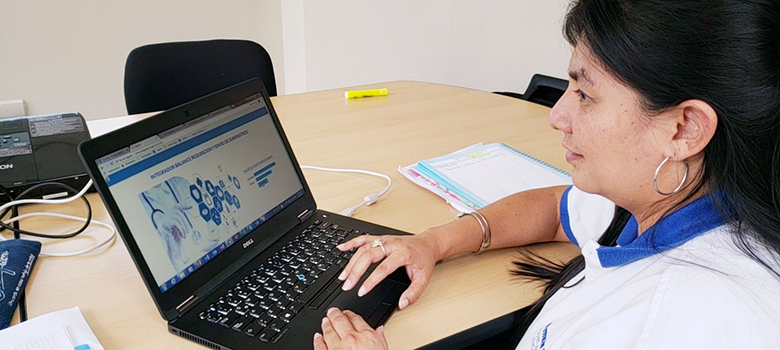Recognizing that simple-to-use, low-cost tools are often more effective, GHSC-PSM used free, open-source technology to help develop the Online Logistics Information Integrator.
At the 16 hospitals providing HIV/AIDS treatment, personnel in charge of logistics management use the Integrator to upload their monthly balance and requisition forms, which report on the actual levels of stock. This process eliminates the cut-and-paste operation previously used to consolidate all logistics information at the central level of the national HIV/AIDS program. An operation that once took one person over 10 days now takes just one day.
 A snapshot of monthly stock-on-hand reports allow users to identify risk of stock out for antiretroviral medicines used in HIV/AIDS treatment and take action to prevent stock out. The red box indicates risk of stock out; yellow indicates stock levels below agreed minimum; green indicates appropriate stock levels; and black indicates levels above agreed maximum.
A snapshot of monthly stock-on-hand reports allow users to identify risk of stock out for antiretroviral medicines used in HIV/AIDS treatment and take action to prevent stock out. The red box indicates risk of stock out; yellow indicates stock levels below agreed minimum; green indicates appropriate stock levels; and black indicates levels above agreed maximum.
In addition to the consolidation of information, the Integrator has many other features that support decision making. For instance, the Integrator generates a variety of reports, some designed to identify potential stockouts so that corrective actions can be taken. Other useful features include:
- Easy to review trends in consumption patterns
- The organization of all logistics information by first, second, and third-line antiretroviral medicines (ARVs)
- The monitoring of ARVs at USAID-priority hospitals
The Online Logistics Information Integrator is empowering staff from the National HIV/AIDS program to better understand their entire logistics network for ARVs. Moreover, this tool could be integrated or used as a complement to any future nationwide LMIS.
